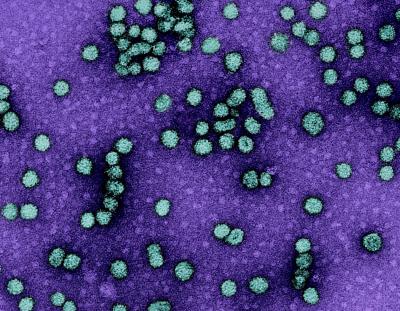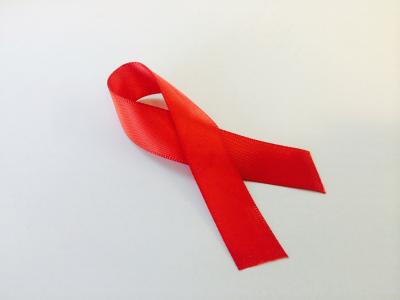A Year of Hepatitis Advances to Mark World Hepatitis Day
Viral hepatitis affects the lives of about one in twenty people in the world, resulting in over a million deaths each year. NIAID is working on many ways to prevent and treat the different types of hepatitis, including the development of vaccines and improved therapeutics and diagnostics. July 28 is observed annually as World Hepatitis Day, providing an opportunity to reflect on the impact of hepatitis on global health and focus on strategies to reduce its burden. To observe World Hepatitis Day, NIAID highlights recent advancements researchers have made in these areas.
Hepatitis is an inflammation of the liver, which can cause liver damage that is fatal in some cases. Most hepatitis cases are caused by viruses, although other infections, heavy alcohol use, exposure to toxins or some medications, or autoimmune disease can also cause hepatitis. There are five main virus types that cause hepatitis, types A, B, C, D and E. The different hepatitis viruses are spread in different ways, and each has unique impacts on health. Hepatitis A and E are generally spread through contaminated food and water, while hepatitis B, C and D are spread through body fluids. People with HIV have an increased risk of severe disease when hepatitis A, B, or C is present in the body. Additionally, presence of hepatitis B and C can affect treatment for HIV. Because of these interactions, people with HIV are disproportionately impacted by viral hepatitis.
Progress Towards Effective Hepatitis B Vaccines for People with HIV
Conventional vaccines against hepatitis B are sometimes unable to provide adequate immunity to people with HIV. An ongoing clinical trial is evaluating the effects of a vaccine against hepatitis B called HepB-CPG (also known as Heplisav-B) in people with HIV. HepB-CPG was shown to provide people with HIV high levels of immunity against hepatitis B. Researchers specifically looked at the effects of HepB-CPG vaccine in people with HIV who had previously not responded to conventional hepatitis B vaccines. The HepB-CPG vaccine uses an adjuvant—or immune booster—called CPG-1018. In the study, they compared HepB-CPG to a hepatitis vaccine that uses alum, a more conventional adjuvant, instead of CPG-1018. The researchers found that the vaccine containing CPG-1018 was superior to the conventional hepatitis B vaccine. The vaccines were safe and well tolerated. This work provides important evidence supporting the further development of vaccines for prevention of hepatitis B in people with HIV. The study is being led by ACTG, an NIAID-led clinical trials network.
Exploring New Pathways of Immunity Against Hepatitis C
Hepatitis C can be cured with antivirals, but there are currently no vaccines against this type of hepatitis, due in part to the large number of variants and rapid evolution of the virus. People cured from hepatitis C can also become reinfected. The number of people diagnosed with hepatitis C is increasing, and a vaccine would be an important tool in preventing the spread of this dangerous virus, which can cause liver failure and cancer. Some people naturally clear hepatitis C from their bodies and have protective immunity against developing the disease when re-exposed to the virus. NIAID-funded researchers are investigating the immune responses in these individuals compared to those who develop persistent infections. The researchers found that neutralizing antibodies contributed to the clearance of hepatitis C virus from people’s bodies, and that these antibodies were directed to specific sites on the surface of the virus. Investigating how these antibodies are produced and how they target the virus may help researchers develop vaccines against hepatitis C.
Advancing the Development of Vaccines Against Hepatitis E
Hepatitis E is the leading cause of acute hepatitis worldwide, causing about 20 million infections and 70,000 deaths each year, with greater impacts in regions with limited access to resources. There are no treatments for acute hepatitis E or approved vaccines against the virus. A vaccine is in development, called HEV-239, which was recently found in a NIAID-supported trial to be safe and achieve a durable immune response in adults in the United States. These promising results support the evaluation of the vaccine in in further clinical trials.
Understanding Hepatitis B-Associated Liver Cancer
NIAID researchers are studying diseases resulting from viral hepatitis-related liver damage, including a type of liver cancer called hepatitis B-associated hepatocellular carcinoma (HCC), which causes malignant tumors in the liver. Although immunotherapy can be effective to treat various forms of solid tumors, HCC-related tumors often do not respond to this treatment. To understand why, researchers carefully studied the tumor microenvironment—the specific molecular and cellular conditions that exist inside tumors—in 12 people with HCC. They found that two distinct subtypes of tumors existed in people with HCC. In about half of the people, the microenvironments of the tumors had high levels of immune activity, while lower levels were observed in the tumors in the other half of the people. This finding may help scientists understand how people with these types of HCC respond to treatments and could allow for development of treatments tailored to individuals with different subtypes.
New Animal Models for Hepatitis B and C
NIAID is funding several new projects focused on developing small animal models to understand and combat hepatitis B and C. This work is important because research on these viruses has been hindered by the lack of available animal models to study promising preventive and therapeutic concepts. Recipients of the new awards include:
- Wake Forest University for a project titled “Novel mouse models of hepatitis B virus infection and replication.” Guangxian Luo is the principal investigator. (Grant number: R01 AI183855-01.)
- The Research Institute at Nationwide Children’s Hospital for a project titled “Animal Model to study heterogeneous outcomes of HCV Infection and Pathogenesis. Amit Kapoor is the principal investigator. (Grant number: R01 AI183877-01.)
- The Rockefeller University for a project titled “Breaching the species barrier: Towards an immunocompetent HBV-susceptible mouse model.” Charles Rice is the principal investigator. (Grant number: R01 AI183884-01.)
- Georgetown University for a project called “Developing woodchucks susceptible to hepatitis B virus infection by modifying the virus or host.” Stephan Menne and Jianming Hu (at Penn State College of Medicine) are the principal investigators. (Grant number: R01 AI183788-01.)
These advances and active projects underscore the important work NIAID is doing to prevent and treat viral hepatitis, with the aim of reducing the global burden of this disease.
For more information, please visit NIAID’s hepatitis research page.



